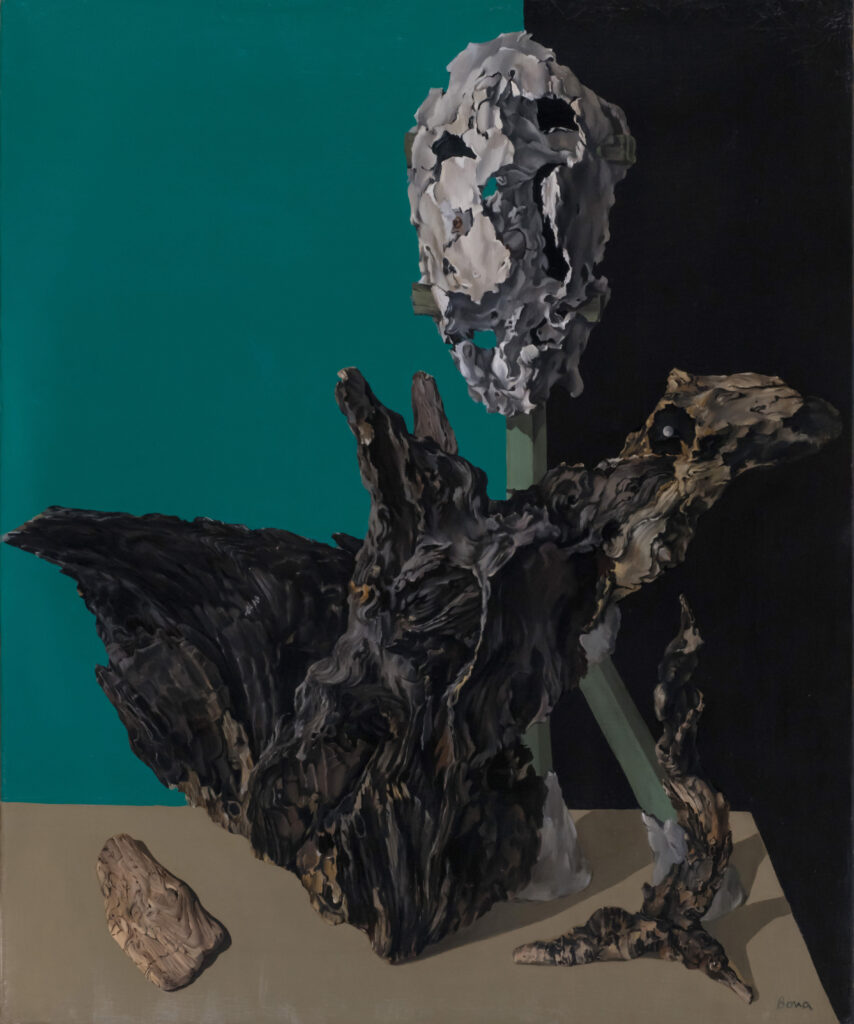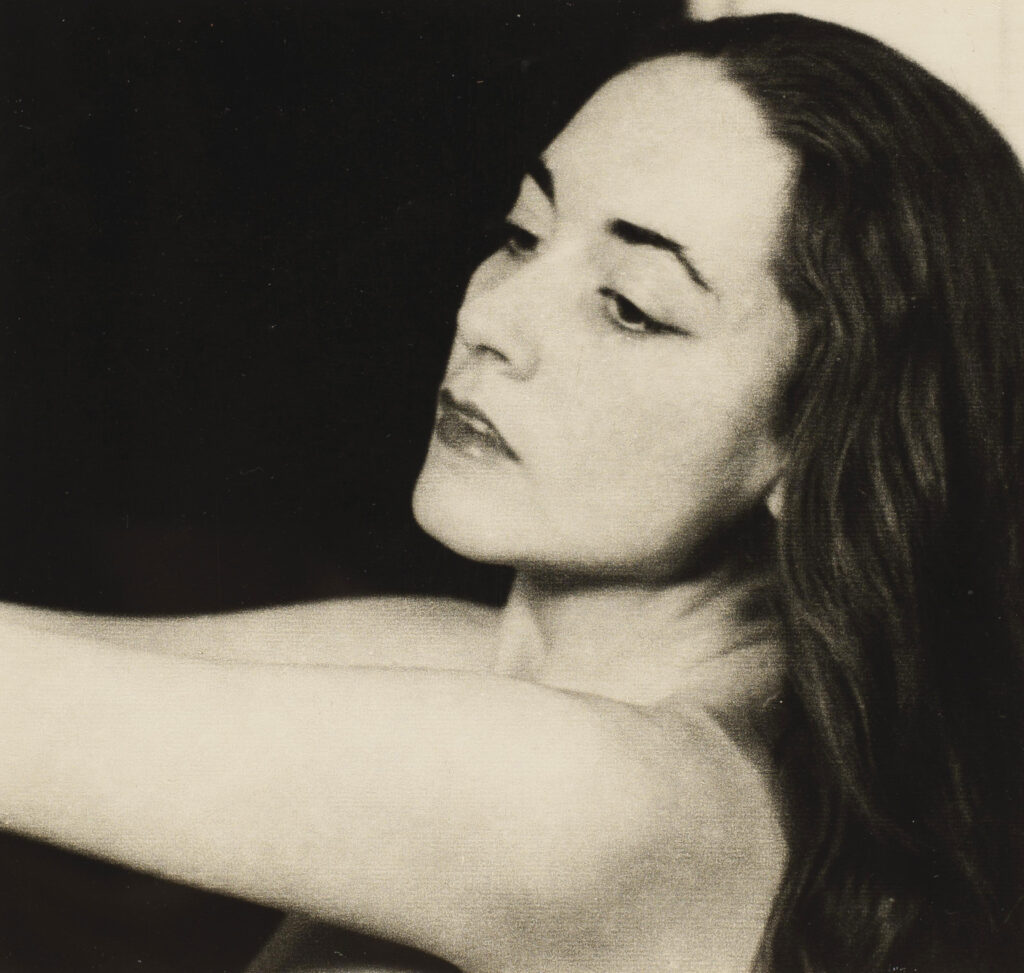Your currently viewing RAW Modern | Switch to RAW Contemporary
Fossili, 1952
Catalogue essay by Blanche Llewellyn
Bona de Mandiargues was a Surrealist Italian-French artist, writer, and translator. In Paris, she met the poet André Pieyre de Mandiargues whom she married in 1950, who introduced her to André Breton, Francis Ponge, and Jean Paulhan. In 1952, the same year as this painting, Bona showcased her artwork for the first time at the Galerie Berggruen, following an exhibition by Man Ray. Subsequently, she was invited by the surrealists, with André Breton personally requesting her participation, in the Surrealist Exhibition of 1954.
“Thanks to the surrealist group, I was able to see more clearly within myself and in what I sought to express.”
In her painting Fossili, the ancient traces of nature embody a tangible link to the past, the transient cycle of existence and the rhythm of life and death. Discernible within her fossils, human and animal-like features emerge. One fossil, lighter in hue, resembles a face, pained and hollow. The face is positioned atop what appears to be a hat stand crafted from green wood, serving as a metaphor, in her own words, of a “nature sequestered by tourism, in front of the ruins more or less rebuilt, surrounded by the hideous constructions of developers and speculators.” The darker one, akin to wood, takes on the appearance of a falcon posed for flight. The unconventional composition highlights a contrast between the superficial destruction of nature in the 1950s (a concern for Bona) and an internal illumination. Light filters through the canvas, casting an ethereal glow that hints at a deeper, hidden truth lying beneath the surface, thus linking the picture to the surrealist ethos.

